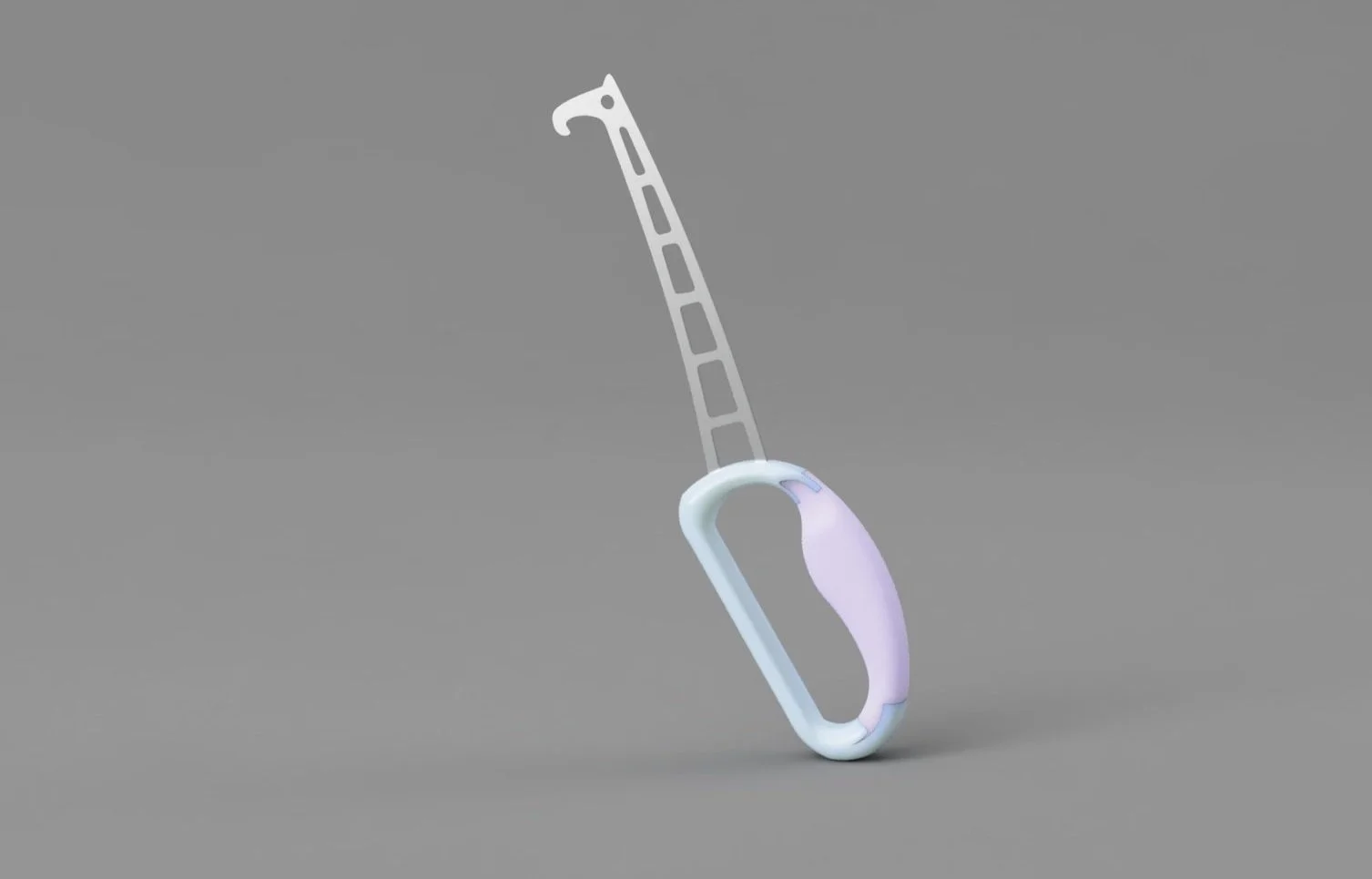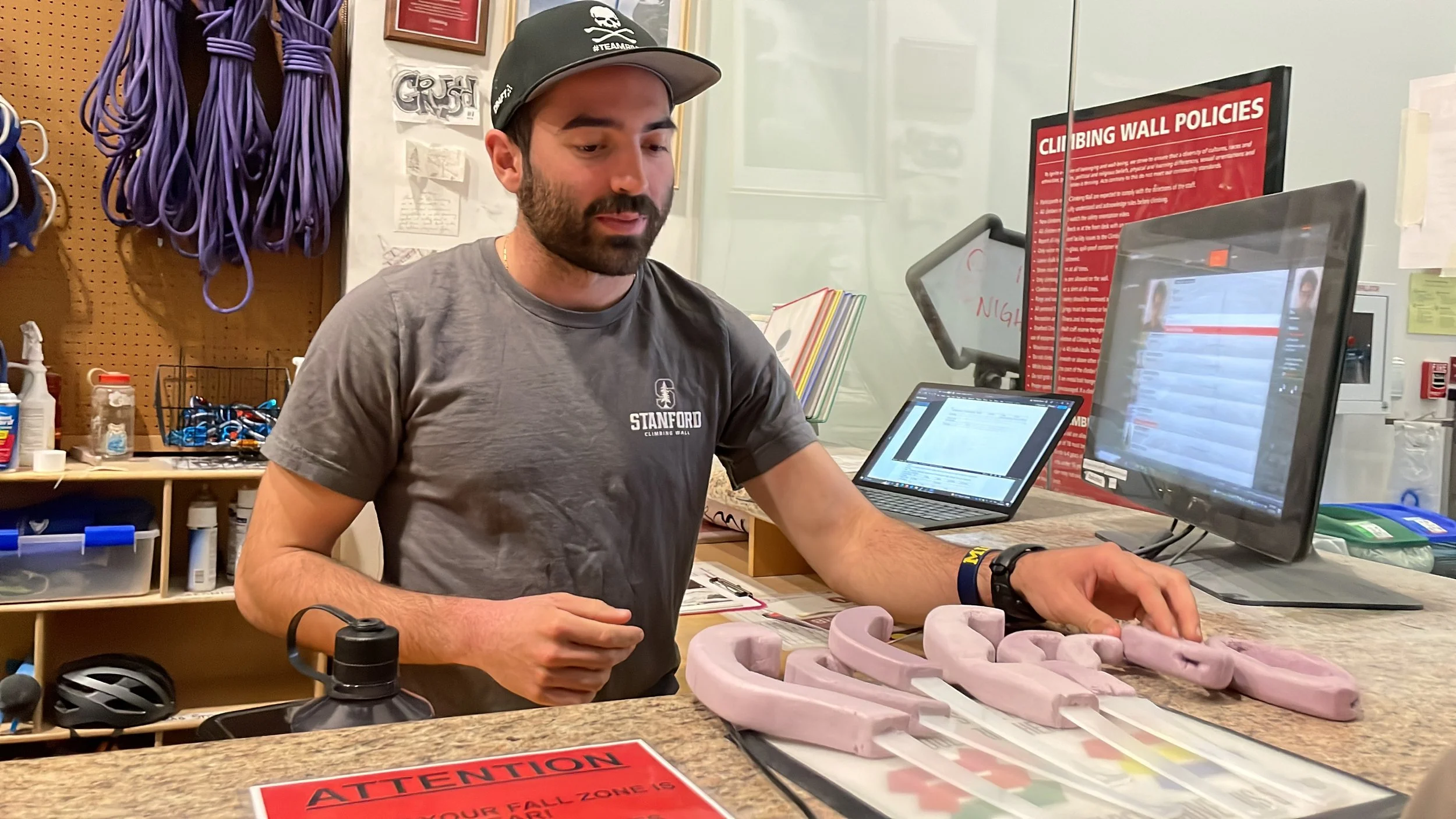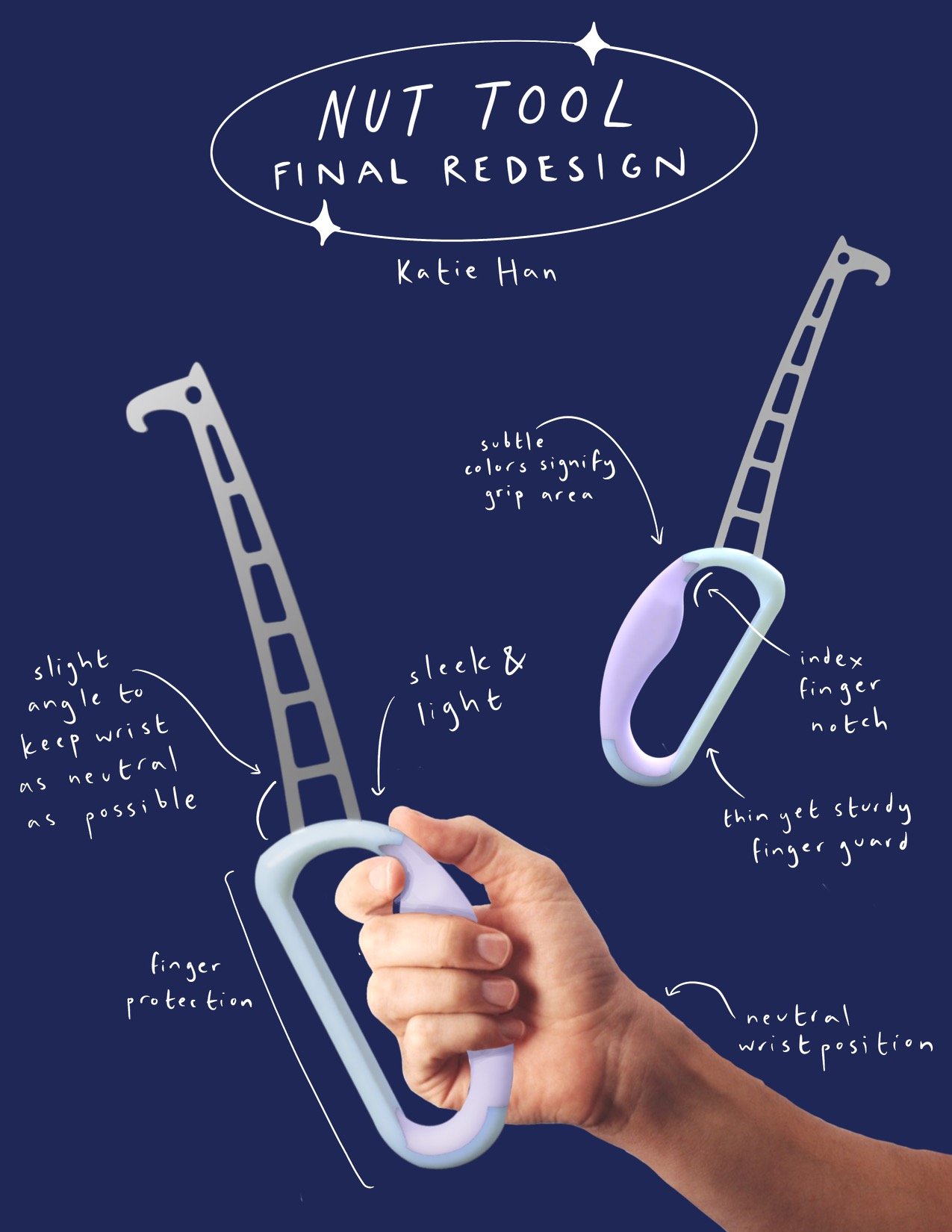Rock Climbing Nut Tool
An ergonomic redesign of a rock climbing tool.
Skills: Fusion 360, user research, needfinding, prototyping
Role: Designer, Researcher
Team: Robert Luke Joseph, Zach Larson, Jannah Kara Vira
Context: Stanford University, 2023
Existing tool + problems
For rock climbing, a nut (or chock or chockstone) is a metal wedge attached to wire that climbers push into spaces or cracks between rocks. This protects climbers when they fall. A nut tool serves the crucial role of enabling climbers to secure or release nuts from their crevices by pressing, stabbing, and/or pulling the nut.





Existing nut tools, made of thin pieces of steel, are uncomfortable and difficult to grip. Using this tool requires repetitive and forceful motion, which can cause pain through excess wrist extension, wrist abduction, and tissue compression.
In order to counteract the strain and cramping, we wanted to add an ergonomic handle to the metal pick. Our main goals were to redesign the tool to be easy to grip, allow for a more neutral wrist position, and be comfortable to use for a range of hand sizes.
ideation + PROTOTYPING
To begin our redesign process, we started sketching ideas for new handles, taking inspiration from other types of tools.
We turned our favorite initial concepts into pink foam prototypes, which we attached to a laser cut top piece.
user TEsting
To test our eight prototypes, we went to the Stanford Alpine Club at the rock gym. We surveyed climbers with a range of climbing experience and hand sizes to ensure that we had a variety of users for our testing:
a beginner climber who has never used a nut tool
an experienced left-handed climber who often uses nut keys
an intermediate climber with bouldering experience
After the climbers held and used the prototype, we interviewed them and asked about their experiences and pain points. We asked the climbers to complete the hand pressure survey for each prototype, as well as rank each model on a scale from 1 to 5. Then, we assessed each interaction with the prototypes using the RULA assessment. The following report from our first session includes hand assessments of pressure and pain, specific comments, RULAs for each design, and more.
refinement
Based on feedback from the testing sessions, we further refined the “gas pump handle” design, creating multiple iterations with varying thicknesses and shapes. After more testing, we decided to combine two of our designs to reduce bulkiness, without losing ergonomic functionality.
The final redesign addressed the climbers’ needs for a sleek, convenient, and comfortable tool. This tool can be held at varying positions and angles without excessive wrist flexion or extension. The finger notches prevent slipping and help the hand settle into place, allowing for a secure grip.
















